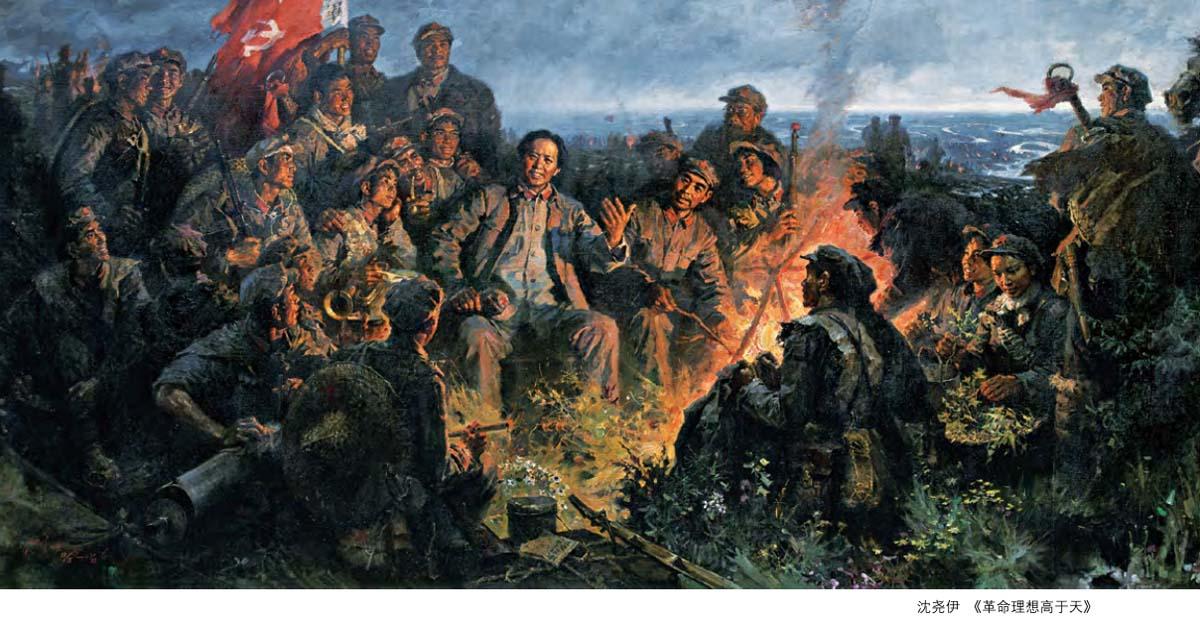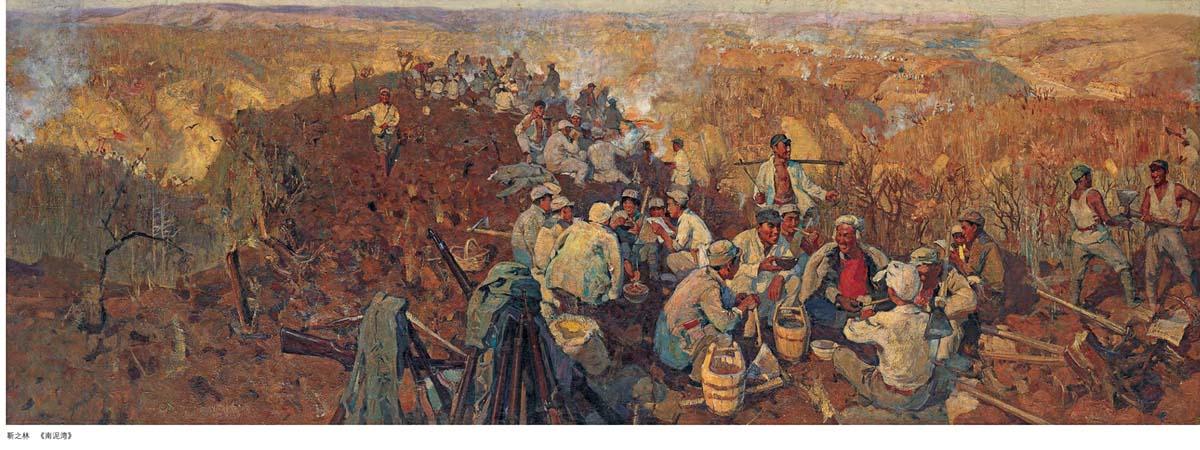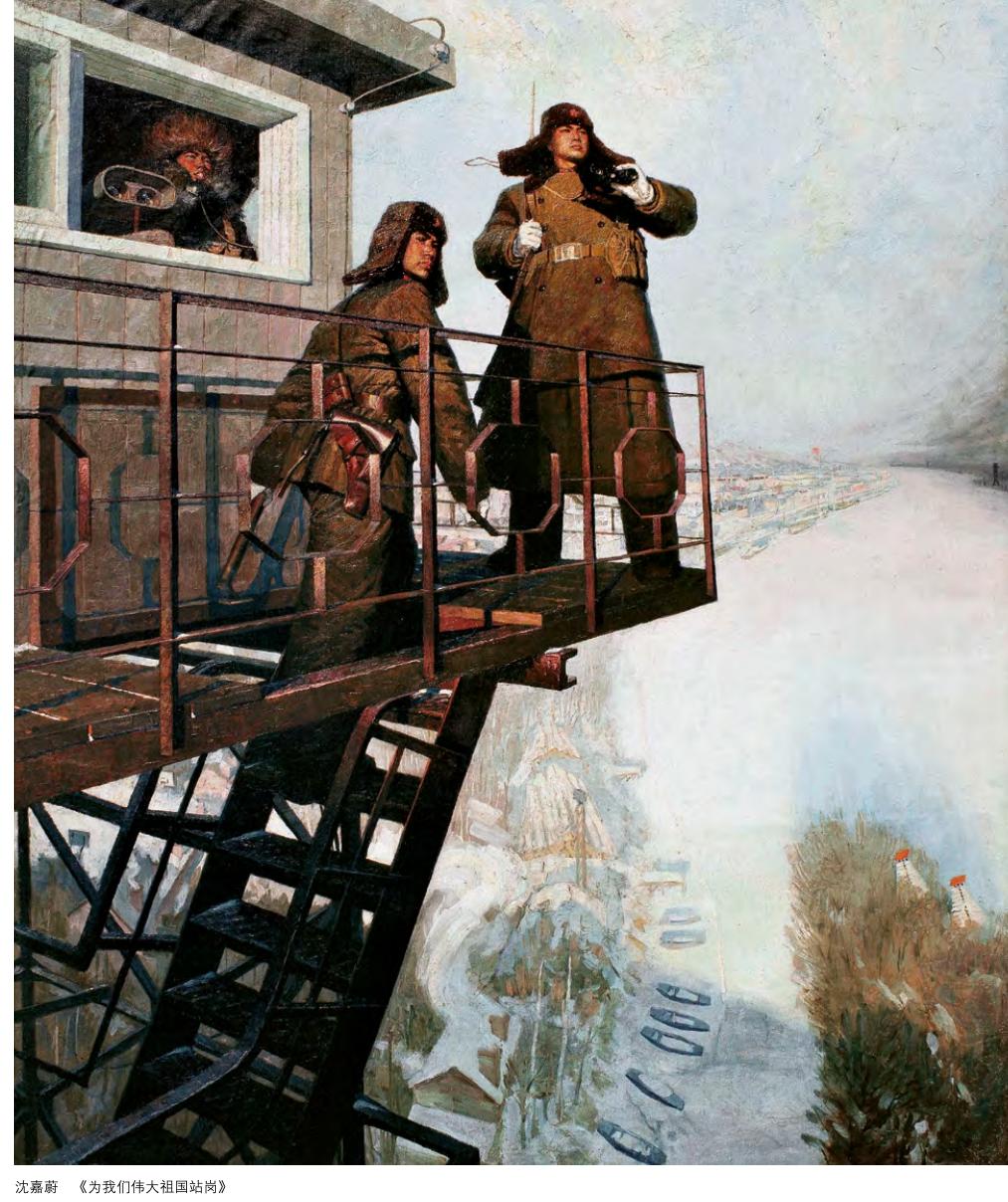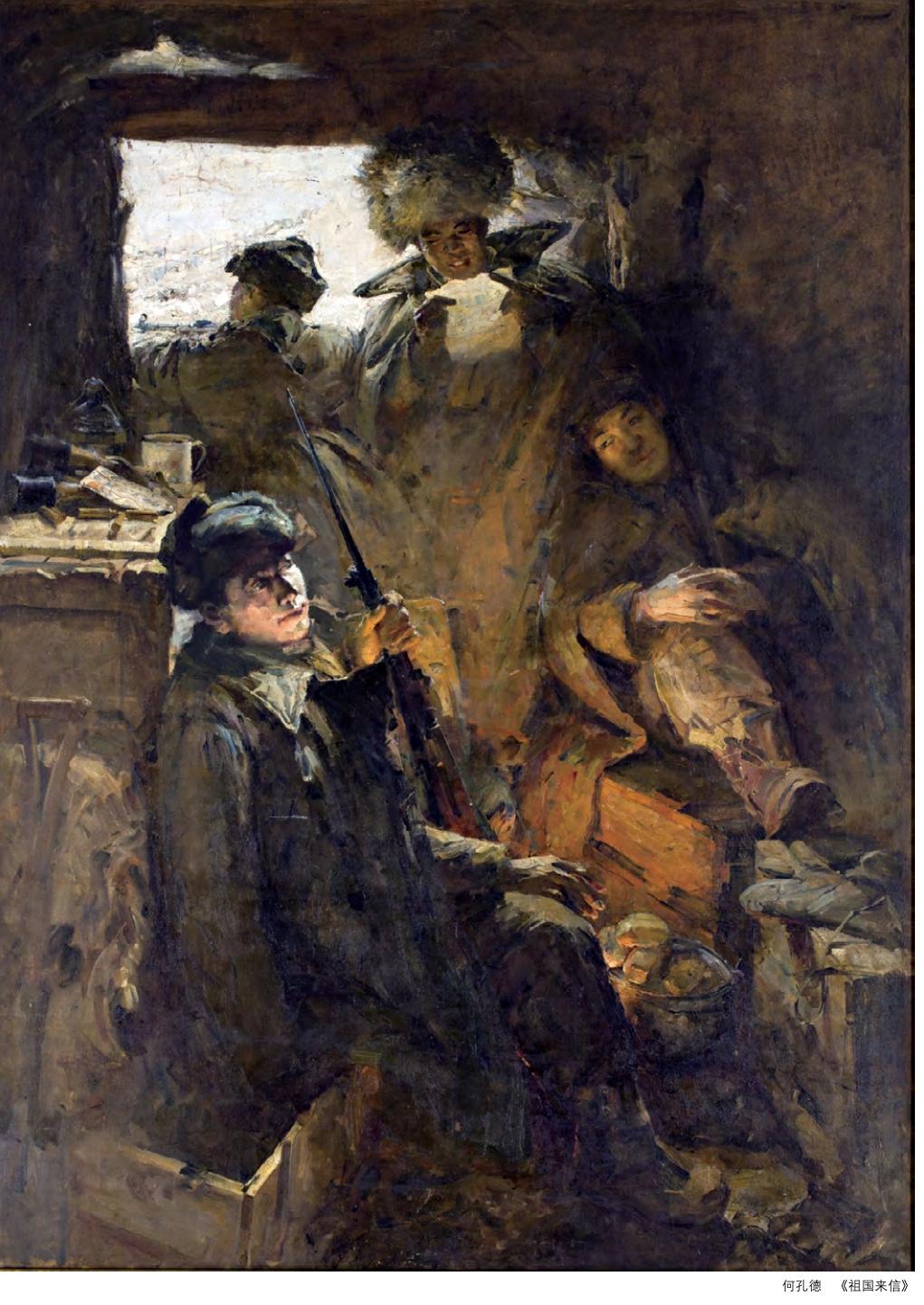油彩中的歷史
付磊

Chinese people knew little about oil painting comparing with their familiarity on the traditional ink and wash painting back in 1949. However, the art form of oil painting has its advantages in depicting the new China in a realistic way because the new country desperately needed to record and present its revolutionary history and socialist society. Oil painting embraced a booming development around 1950s and 1960s. Oil painting artworks generated then were usually referred to as “Red Oil Painting”, which shared similar revolutionary themes, depicted heroic events as well as the vigorous nation-wide socialist construction. Some of the best oil paintings bear impeccable skills and witnessed that unique history of China fairly. Artists then urged to create a realistic oil painting style with Chinese features instead of the innate European or Russian style, in terms of not only theme but also aesthetics and skills. That effort was successful, but on the other hand drifted Chinese oil painting away from the mainstream development of oil painting in the world and suffocated the fledging modernist development in China which started since 1930s.
在1949年,國人對于油畫的認知,當然不及我們自己傳統的水墨畫。但繼承自西方古典主義的寫實傳統,卻令油畫有了很多優于中國畫的專長。油畫可以極盡寫實,油畫可以更好地表達現實主義的內容和內涵,油畫可以將一個嶄新的中國用生動、形象、真實的語言再現于畫布。因此,在這個全新的世界里,油畫很快就占有了重要的地位。
中華人民共和國成立之后,無論是革命的歷史還是社會主義的現實,都需要用藝術形式加以表現,而這一重擔當然毫無懸念地落在了油畫的身上。20世紀五六十年代,革命歷史題材的油畫創作迎來了一個高峰。得益于上層的支持和穩定的創作環境,一大批杰出的寫實油畫家貢獻出了大量優秀的現實主義作品。
這些在今天常常被稱作“紅色油畫”的作品,大多有著相似的主題和思想——從革命歷史、偉人事跡、英雄人物等身上挖掘可供表現的內容,或者直接歌頌當時如火如荼的社會主義新中國建設。其中相當一部分優秀作品,從技巧上而言幾乎無可挑剔,十分成熟;從思想性上來說,則代表了當時那段歷史時期的社會和藝術思潮,是歷史的成果與見證。
很多人認為,油畫雖然引自西方世界,但既然來到中國、為建設社會主義服務,便應該具有中國的、民族的特色。此前,中國油畫領域的扛鼎人物大多有著留法經歷,繼承了歐洲的古典主義油畫傳統;新中國成立后,來自前蘇聯的專家教授在中國開班授課,又使當時的油畫創作逐漸轉向俄羅斯傳統。如何讓中國油畫具有中國特色,即“油畫民族化”,開始成為上世紀五六十年代藝術界最重要的議題之一。
董希文在其《從中國繪畫的表現方法談到油畫中國風》一文中寫道:“今后,我們不僅要繼續掌握西洋的多種多樣的油畫技巧,發揮油畫的多方面的性能,而且要把它吸收過來,經過消化變成自己的血液,也就是說要把這個外來的形式變成我們中國民族自己的東西,并使其有自己的民族風格。”事實上,這一目標的確在很大程度上達成了。當時留下的很多油畫作品,不僅在內容、思想,包括在審美、技法上都呈現著中國式的取向。為了向“中國風”靠近,畫家們變換技巧,在油彩的使用、鋪陳,光影的安置、強弱以及結構的設計、氛圍的營造等方面做出種種嘗試和改變,使作品更具中國特色。
遺憾的是,一邊倒似的鼓勵現實主義創作和審美,令20世紀30年代便已在中國有了較大發展的現代主義風格流派無所適從。中國油畫開始呈現出單一的面貌,與世界油畫發展的大潮流逐漸疏離。

- 世界知識畫報·藝術視界的其它文章
- 道金平作品欣賞
- “天民樓”攪動一池春水
- 肖耀彩作品欣賞
- 柏龍華作品欣賞
- 北京匡時春拍穩健收槌
- 誰不逐炎涼

